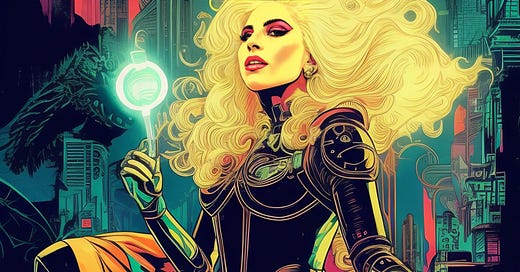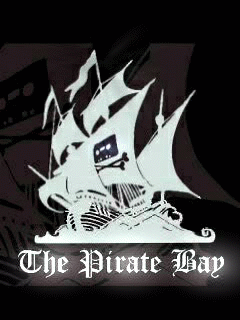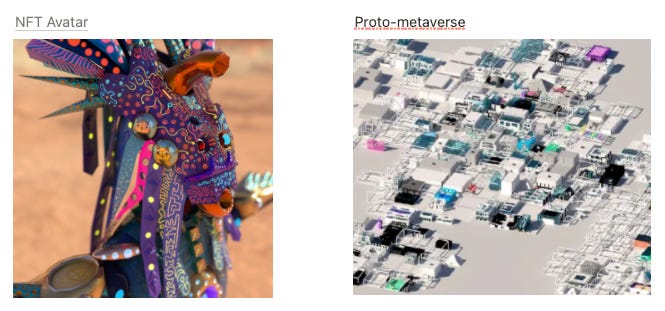The NFT Craze, Wave 2
NFT's first gained the internet's attention when virtual tamagachi's clogged up Ethereum, the financial system of the future (uh-oh). It's been quiet for a few years, but now a new wave is here. It's becoming simple to put art and collectibles on a blockchain, and people are losing their mind. It feels like the craze of crazes. It's the adult version of Pokemon cards because ... Bitcoin.
As of December 2020, there are 10 NFT's that sold for more than the average home price in Kentucky. These digital items include a Starship, a Bitcoin clock, a cat, a sketch, a plot of land, and a chunk of road. This latest wave includes blockchain basketball cards sponsored by the NBA. A video of a Lebron James dunk sold for $71,000. The final month of 2020 closed with $8.2 million in NFT transactions. The fuel behind the craze is the ease of token creation using FLOW Protocol, and the ability to buy these collectibles in US Dollars (instead of crypto).
The question everyone is thinking is, WHY? Why do NFT's have any value? The typical answers gets into decentralization. It's a collectible where ownership can be verified through a blockchain that no one controls. But just because it's on a blockchain, that doesn't give it inherent value. The main things NFT's are missing: a context to matter.
The current wave of NFT's are like pieces of art without a home. It's like if the Mona Lisa were airdropped among a pack of pre-historic cave men. After marveling at it's alien beauty, they would probably cut it up and make a small bag out of it's canvas.
NFT's will have real value when there is a context for digital authenticity to matter. I think the ultimate context for NFT's is a three-dimensional social universe. The Metaverse will breed the necessity for 3D NFTs, in the form of avatars, objects, and worlds. A crypto tamagachi on Ethereum is a novelty with no real function. But a digital avatar dress designed by Lady Gaga that can be owned by only one person at a time and worn to virtual events could be worth millions.
WTF is NFT?
NFT stands for a "non-fungible token." WTF does that mean? Think of the word fungible as inter-changeable. Bitcoin is fungible, as is the Lincoln Penny and a Dr. Pepper. A non-fungible object is something that is uniquely crafted: the Mona Lisa, your house, a Mark McGuire card from 1999.
The internet has had a rough time dealing with non-fungible art over the last 25 years. There was no way to capture unique things. Think about Kazaa and Limewire. Digital assets were easy to reproduce. Pirating sites and torrents sprouted. It didn't matter if the thing was inauthentic, you could access the media and not have to pay for it. At the end of this long-arc, the solution was for a monopoly to build a library of all the world's music, put annoying ads in between songs, and then charge $10 a month to remove them.
Blockchain presents a new opportunity for digital rights management. The idea is that at any given time, the blockchain has an up to date version of the state of EVERYONE's "wallet," which can determine if the Andy Warhol original you are flaunting is the real deal or not. Someone with a forgery wouldn't have the ability to prove that it's authentic.
Experimentation Time
Right now, we're in a phase of wacky experimentation. Not only can these objects be verified on a blockchain, but they can have logic coded into them. There are some NFT's where the artist earns royalties on each sale. This kind of logic can give power back to artists. There is a whole new range of possibilities for ecosystems and rules that can be programmed into art, and we're starting to see some strange new things.
One of the weirder examples are Hashmasks. There are around 16,000 pieces of art (like the one on the right) made by 70 artists. By HODLING a piece of art, it generates "name change tokens" daily. There is a catch though, over time, less and less name change tokens are minted, until eventually there are no tokens created. AND, if you want to change the name of a piece of art you own, you have to BURN the tokens. This means, eventually, the names of these pieces of art will be permanently fixed. The value of art here for the consumers is the ability to participate through naming it.
In the next few years, we will see hundreds of "art economies" like this emerge, each with it's own clever interpretation of value. Will any of these things have value in the future? The fuck knows. Maybe people will want them. Or maybe they will be functionally obsolete with high historical significance since they were the FIRST forms of digital art.
At the very least, it's a way for artists to make money off of curiosity and speculation. It's a weird fusion of crowd psychology, art, memes, social media, and the ethos of decentralization.
Piracy & Context
My take is that there isn't really a context for NFT's to matter at the moment. I can take a screen-shot of a CryptoKitty or CryptoPunk and make it my Twitter profile picture. It's not authentic, and I couldn't prove that I own it, but my argument is that it doesn't matter. Yes, it's on a blockchain, but it's medium is a 2D sprite. I can make a forgery with a button my keyboard, and then use it in a way that actually matters to me.
In most internet contexts, a 2D replica of a thing can serve someone just as well as the authentic version. Being able to prove that you own digital media isn't important to most people right now. More important than ownership right now is ACCESS, and that it handled by Netflix, Spotify, Amazon, Google, etc. For grassroots internet content, there is always the possibility that public media replicates out of control, takes on a life of it's own, and has no trace back to it's origin.
For blockchain verification to matter, I think it requires:"
1) difficulty to pirate, and
2) a context where authenticity matters
3D objects are a lot more difficult to replicate than 2D objects. There is no way to "scan" it. The only way to replicate is by having access to the source files, which the original artist likely wouldn't share. 3D objects will naturally play into the Metaverse, a real-time network of 3D applications. The Metaverse will be the context where digital objects have both a home and a function. Saying that NFT's in the Metaverse will be "huge" in an understatement, because their evolution and value is in a way, co-dependent.
A Lady Gaga Dress in the Metaverse
There is a parallel between Lady Gaga's dresses and avatar design that I hadn't realized until recently. There is nothing stopping others from recreating her dresses, but they are so intricate that it would be difficult to create a replica that stands in as the original. As a being, she resembles a crazy digital avatar more than a regular human in human clothes. Fashion and avatars will fuse together and play a big role in virtual concerts.
In the last year, the pandemic has super-charged the development of virtual shows. Fortnite led the charge with a 14 million person Travis Scott concert in April, and for the last 10 months, artists have been rushing in to figure out how to makes sense of the new landscape.

After a virtual Lady Gaga concert, she could offer her dress/avatar to the highest bidder in the crowd. Instead of retiring it in a museum, it can take on a life of it's own, and breed it's own culture.
She can program the dress so that it can only be embodied by one avatar at a time. Sure, anyone can take a picture of it, but in this context, the picture is way less valuable than the exclusive rights to a piece of fashion that can be worn through different virtual worlds. It's a piece of digital clothing that has history and value. The blockchain makes it's authentic, and it's 3D nature make it forgery proof.
Since Lady Gaga and her team own the digital source files, they are the only ones that could produce replicas. But it's in their interest for her NFT dress to be a singular thing that accrues value over years, so those Blender files will be tightly guarded.
This NFT Gaga dress is more than something you wear. It's a piece of code. There can be logic embedded in the seams. It can be designed in a way so that after every sale, royalties get paid to all previous owners, as well as Stephanie Germanatos. In this way, being an early owner of a singular piece of historical fashion becomes a form of passive income. Maybe owning the dress grants you a certain "VIP" boolean status that lets you get into events, like a digital awards show (but the catch is, your mic is muted). Or maybe each owner of the dress gets their name imprinted on the inner-lining, preserving their identity through history.
This dress has all of the properties of the NFT's we see today, except there is a 3D digital culture where the potential of an NFT can be applied.
NFTs <> Metaverse
We are already seeing the rise of 3D multiplayer worlds that can have NFT's embedded in them, like Cryptovoxels and Decentraland. Over the next two decades, we will see a rise in these worlds, and many of them will become inter-connected to a house a fluid digital culture.
Digital worlds, houses, avatars, accessories, objects will begin to gain purpose and value as these proto-metaverses grow and fuse. There is an opportunity for virtual designers and architects to make a living creating objects for these budding communities, whether through custom commissions or royalties.
3D NFT's will emerge as a more valuable type of asset because of the challenge to replicate them, and because of an emerging context where they have purpose. The Metaverse will be the thing that fuses real-time technology and blockchain.









